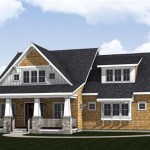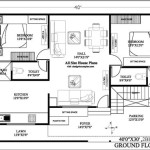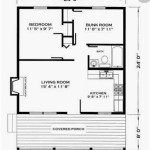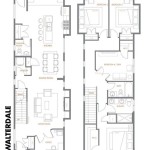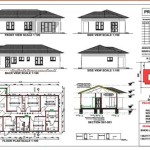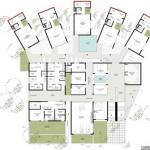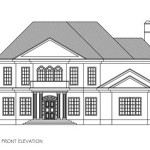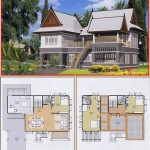This Old House Coffee Table Plans: A Guide to Building Your Own
The coffee table, a ubiquitous piece of furniture in most living rooms, serves as a functional and aesthetic cornerstone. It provides a surface for drinks, books, and decorative items, while also contributing to the overall style and ambiance of the space. For homeowners seeking a personalized and cost-effective alternative to store-bought options, building a coffee table from scratch using readily available plans offers a rewarding and fulfilling project. This article explores the benefits of utilizing "This Old House" coffee table plans, detailing the types of plans available, the necessary materials and tools, and the step-by-step process involved in construction. Emphasis will be placed on clarity, safety, and achieving a professional-looking result.
"This Old House," a long-running television program dedicated to home improvement, has accumulated a vast library of project plans over the years, including numerous designs for coffee tables. These plans cater to a wide range of skill levels, from novice woodworkers to experienced craftsmen. The plans typically provide detailed instructions, material lists, cutting diagrams, and visual aids to guide the builder through each stage of the process. By leveraging these resources, individuals can create a unique and customized coffee table that perfectly complements their existing décor and meets their specific functional needs.
Benefits of Using "This Old House" Coffee Table Plans
Choosing "This Old House" coffee table plans offers several advantages over other available resources. The plans are generally well-vetted, providing clarity and accuracy in the instructions. The "This Old House" brand carries with it a reputation for quality and practical knowledge, ensuring that the end result is structurally sound and visually appealing. Here are three key benefits:
1. Clarity and Accuracy: "This Old House" plans are known for their clear and concise instructions. They are typically written with the average homeowner in mind, avoiding overly technical jargon and providing step-by-step guidance that is easy to follow. The material lists are comprehensive, ensuring that all necessary components are accounted for before the project begins. Cutting diagrams are also included, optimizing material usage and minimizing waste. The level of detail provided in these plans reduces the likelihood of errors and frustration during the building process.
2. Proven Designs and Structural Integrity: The plans featured on "This Old House" are often based on proven designs that have been tested and refined over time. This means that the resulting coffee table is likely to be structurally sound and durable, capable of withstanding regular use. The plans may incorporate design elements that enhance stability and longevity, such as mortise-and-tenon joints, dovetail joints, or sturdy leg construction. By adhering to the specifications outlined in the plans, builders can be confident that their coffee table will be a functional and attractive addition to their home for years to come.
3. Cost-Effectiveness and Customization: Building a coffee table using "This Old House" plans can be a more cost-effective option than purchasing a comparable piece of furniture from a retail store. The cost savings can be significant, particularly if the builder utilizes reclaimed or recycled materials. Furthermore, the plans provide a foundation for customization. Builders can adapt the dimensions, materials, and finishes to suit their individual preferences and the specific requirements of their living space. This level of personalization is often difficult to achieve with mass-produced furniture.
Types of Coffee Table Plans Available
"This Old House" offers a diverse range of coffee table plans, catering to various styles, skill levels, and material preferences. Some common types of plans include:
1. Simple Coffee Tables: These plans are designed for beginners and typically feature straightforward construction techniques. They often utilize readily available materials such as plywood, pine, or dimensional lumber. The focus is on simplicity and functionality, with minimal emphasis on intricate details or complex joinery.
2. Rustic Coffee Tables: These plans incorporate reclaimed wood or rough-sawn lumber to create a rustic and weathered aesthetic. The designs may feature exposed fasteners, distressed finishes, and natural imperfections that enhance the rustic character. These tables often have a more substantial and robust appearance.
3. Modern Coffee Tables: These plans emphasize clean lines, geometric shapes, and minimalist design. They may utilize materials such as metal, glass, or engineered wood products. The focus is on creating a sleek and contemporary look that complements modern décor.
4. Coffee Tables with Storage: These plans incorporate drawers, shelves, or hidden compartments to provide additional storage space. They are ideal for smaller living rooms where space is at a premium. The designs may be more complex than simple coffee tables, requiring more advanced woodworking skills.
5. Repurposed Coffee Tables: These plans involve repurposing existing furniture or materials to create a unique and eco-friendly coffee table. For example, an old door, a wooden pallet, or a set of antique legs can be transformed into a stylish and functional centerpiece.
Materials and Tools Required
The specific materials and tools required will vary depending on the coffee table plan selected. However, some common items include:
Materials:
- Lumber (e.g., pine, oak, maple, plywood)
- Fasteners (e.g., screws, nails, wood glue)
- Finishing materials (e.g., stain, paint, varnish, polyurethane)
- Hardware (e.g., drawer pulls, hinges) – if applicable
- Sandpaper (various grits)
- Wood filler
Tools:
- Measuring tape
- Pencil
- Safety glasses
- Hearing protection
- Circular saw or table saw
- Miter saw
- Drill/driver
- Screwdriver
- Sanding block or power sander
- Clamps
- Hammer
- Level
- Square
- Wood chisel (optional)
- Router (optional)
It is crucial to ensure that all tools are in good working condition and that the operator is familiar with their safe and proper use. Safety glasses and hearing protection should be worn at all times when operating power tools. A well-ventilated workspace is also recommended, particularly when working with paints, stains, and varnishes.
Step-by-Step Construction Process
The following is a general overview of the steps involved in building a coffee table using "This Old House" plans. It is essential to consult the specific instructions provided in the chosen plan for detailed information and measurements.
1. Preparation: Begin by thoroughly reviewing the coffee table plan and familiarizing oneself with all the steps and materials required. Gather all the necessary materials and tools. Prepare the workspace by clearing any obstructions and ensuring adequate lighting and ventilation. Double-check all measurements and cutting lists before proceeding.
2. Cutting the Lumber: Using the cutting diagram provided in the plan, carefully cut the lumber to the specified dimensions. Use a circular saw, table saw, or miter saw to make accurate and precise cuts. Take extra care when cutting miters or angles. Sand the edges of the cut pieces to remove any splinters or rough spots.
3. Assembling the Frame: Assemble the frame of the coffee table according to the instructions in the plan. Use wood glue and screws or nails to join the pieces together. Ensure that the frame is square and level before proceeding. Clamps may be used to hold the pieces in place while the glue dries.
4. Attaching the Legs: Attach the legs to the frame using screws, bolts, or other suitable fasteners. Ensure that the legs are securely attached and that the coffee table is stable and level. If the plan calls for a specific leg design, follow the instructions carefully.
5. Adding the Tabletop: Attach the tabletop to the frame using screws, glue, or other appropriate fasteners. Ensure that the tabletop is centered and flush with the frame. If the tabletop is made from multiple pieces of lumber, ensure that they are properly aligned and joined together. If a solid wood tabletop is used, consider the potential for wood movement due to changes in humidity.
6. Sanding and Finishing: Sand the entire coffee table to create a smooth and even surface. Start with a coarser grit sandpaper (e.g., 80-grit) and gradually progress to finer grits (e.g., 120-grit, 220-grit). Remove all dust and debris before applying the finish. Apply the desired finish, such as stain, paint, varnish, or polyurethane, according to the manufacturer's instructions. Allow the finish to dry completely between coats. Lightly sand between coats to achieve a smooth and even finish.
7. Adding Hardware and Final Touches: If the coffee table includes drawers, shelves, or other hardware, install them according to the plan's instructions. Attach any decorative elements or embellishments. Inspect the finished coffee table for any imperfections and make any necessary repairs or adjustments. Clean the coffee table thoroughly before placing it in its final location.
Safety is paramount throughout the construction process. Always wear appropriate safety gear, such as safety glasses and hearing protection, when operating power tools. Work in a well-ventilated area and follow all safety instructions provided by the tool manufacturers. Take breaks when needed to avoid fatigue and maintain focus. Building a coffee table is a rewarding project, but it requires patience, attention to detail, and a commitment to safety.

How To Build A Coffee Table Pro2pro Premiere This Old House

Turn An Old Door Into A Farmhouse Style Coffee Table

Faux Inlay Mid Century Coffee Table Diy Maggie Overby Studios

Transform A Traditional Coffee Table You Have In Your Home Into Mid Century Mod Masterpiece I Teamed Up With Modern House

Diy Coffee Table From An Antique Dresser Funky Junk Interiors

7 Clever Coffee Table Substitutes A Reclaimed Rustic Door Creative Tables Home Decor

Factory Cart Coffee Table Furniture Vintage Industrial

En Coop Coffee Table Refresh Restyle

10 Diy Coffee Table Ideas On A Budget Simphome Furniture Makeover Redo

Diy Two Tier Coffee Table

